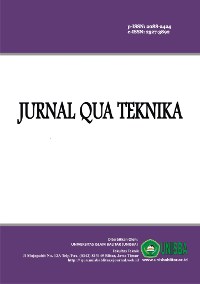Pengaruh Pengujian Hardening pada Baja Karbon Rendah Sebagai Solusi Peningkatan Kualitas Material
Abstract views: 1407
,
PDF (Bahasa Indonesia) downloads: 2473
Keywords:
Steel, hardening, Hardness
Abstract
Low carbon steel is an alloy consisting of the main elements of carbon with a low composition and iron. The mechanical properties of low carbon steel are influenced by the composition and microstructure of metals. One of the mechanical properties of the metal to be searched for is violence. The purpose of this study is to conduct hardening testing of low carbon steel material. The results obtained from this study are that the hardness of low carbon steel increases with increasing heating temperature. In addition, based on experimental data it is known that salt water cooling media has a higher hardness compared to SAE 10 oil.
Published
2019-03-28
How to Cite
Nurlina, N. (2019). Pengaruh Pengujian Hardening pada Baja Karbon Rendah Sebagai Solusi Peningkatan Kualitas Material: . Jurnal Qua Teknika, 9(1), 11-20. https://doi.org/10.35457/quateknika.v9i1.636
Section
Articles
Authors who publish with this journal agree to the following terms:
- Copyright on any article is retained by the author(s).
- Author grant the journal, right of first publication with the work simultaneously licensed under a Creative Commons Attribution License that allows others to share the work with an acknowledgement of the work’s authorship and initial publication in this journal.
- Authors are able to enter into separate, additional contractual arrangements for the non-exclusive distribution of the journal’s published version of the work (e.g., post it to an institutional repository or publish it in a book), with an acknowledgement of its initial publication in this journal.
- Authors are permitted and encouraged to post their work online (e.g., in institutional repositories or on their website) prior to and during the submission process, as it can lead to productive exchanges, as well as earlier and greater citation of published work.
- The article and any associated published material is distributed under the Creative Commons Attribution-ShareAlike 4.0 International License







